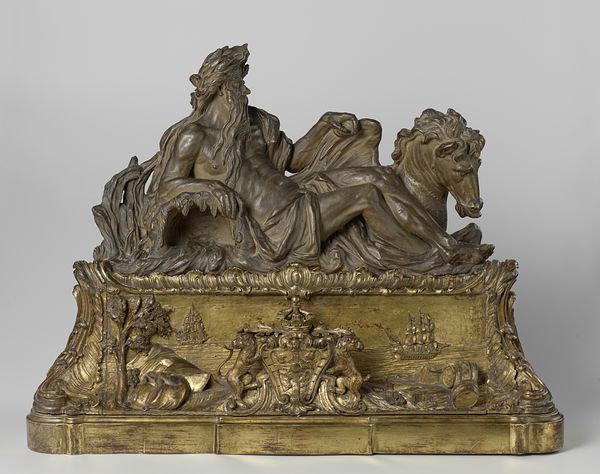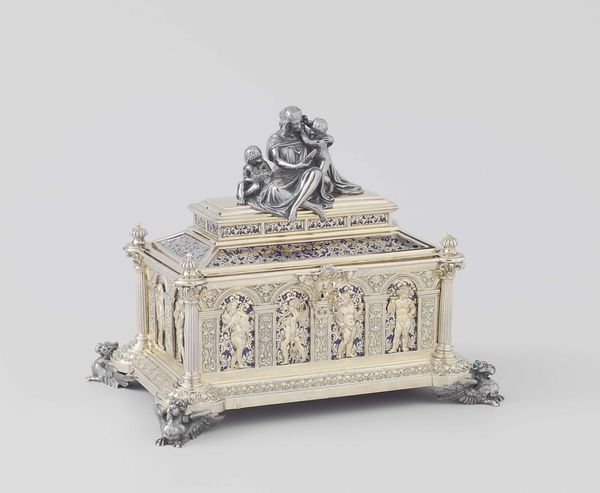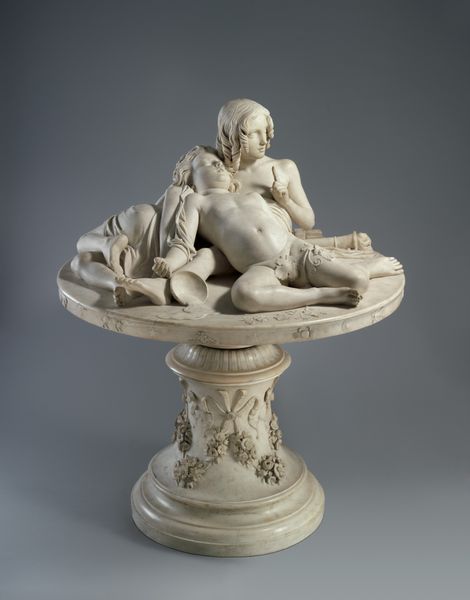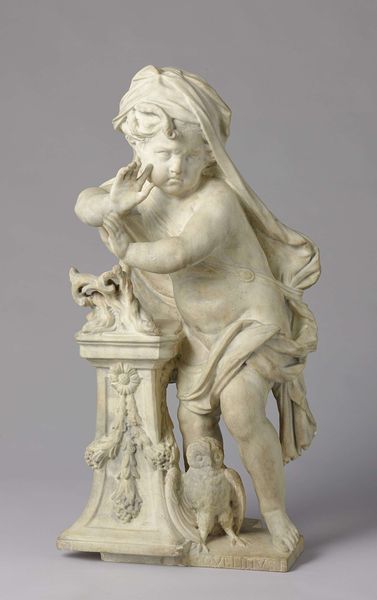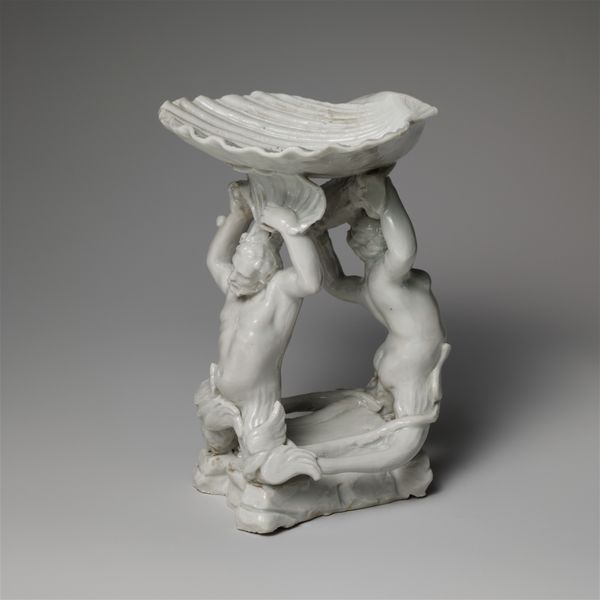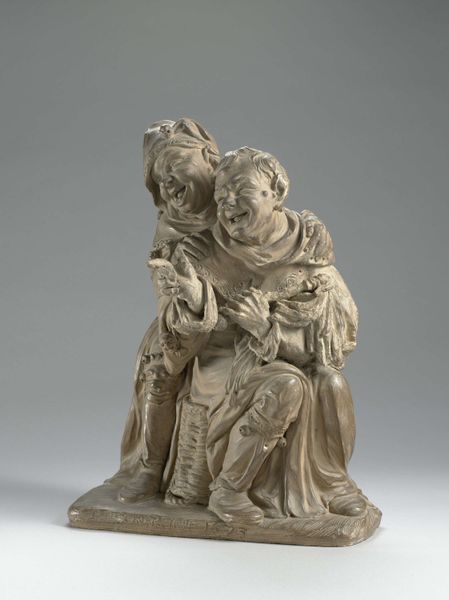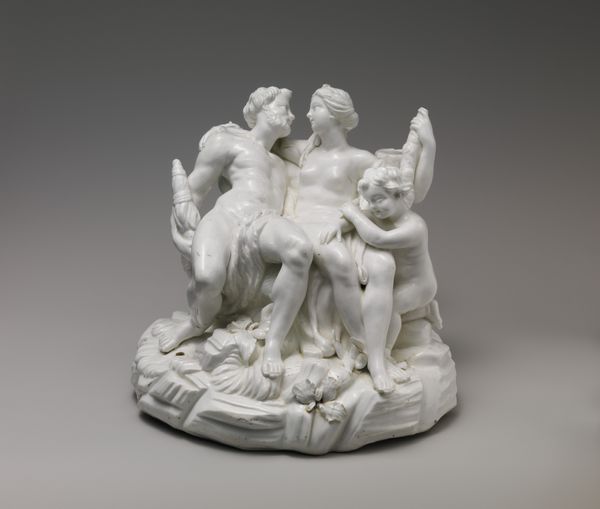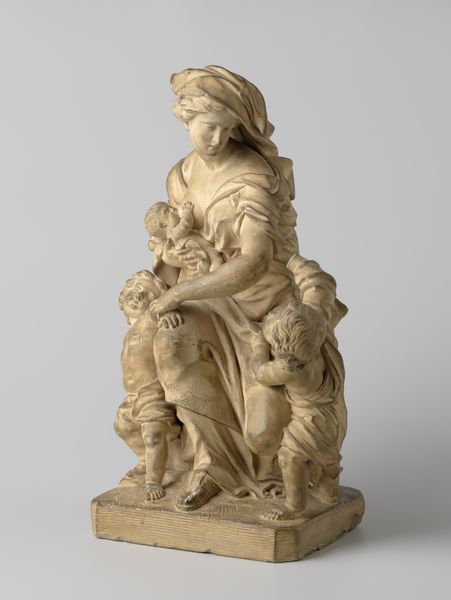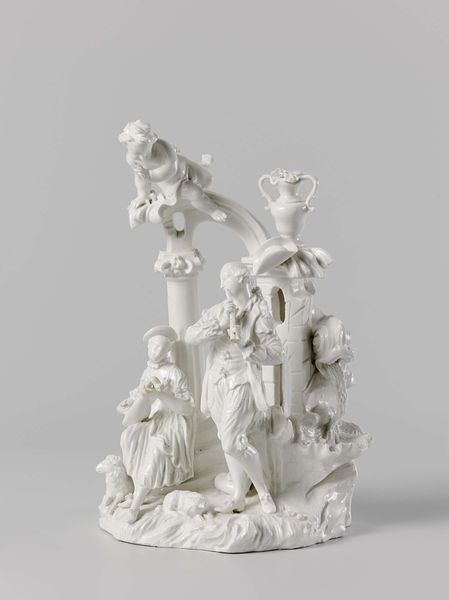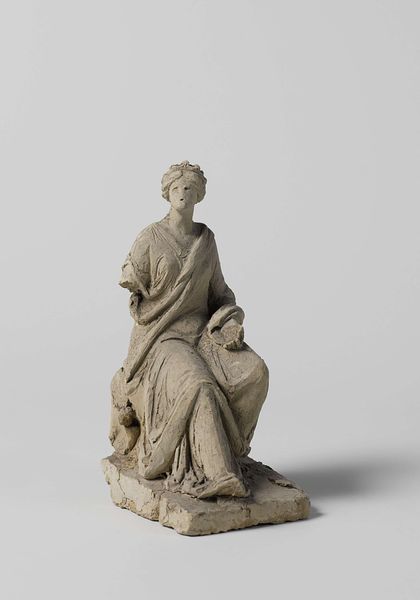
Bozzetto for a Funerary Monument, Probably for Lieutenant-General Count Reinhard Vincent von Hompesch (c. 1660-1733) 1728
0:00
0:00
relief, sculpture, marble
#
portrait
#
baroque
#
sculpture
#
relief
#
sculpture
#
history-painting
#
marble
Dimensions: height 23.5 cm, width 29 cm, depth 12.5 cm
Copyright: Rijks Museum: Open Domain
Editor: So, here we have Jan Baptist Xavery’s “Bozzetto for a Funerary Monument, Probably for Lieutenant-General Count Reinhard Vincent von Hompesch (c. 1660-1733)," created around 1728. It’s a marble relief. I find it quite striking, almost theatrical, with the figure reclining so prominently. What grabs your attention when you look at it? Curator: What immediately stands out to me is how this sculpture embodies the visual culture surrounding death and commemoration in the 18th century. These funerary monuments weren't just personal tributes; they were powerful statements of social status and political ideology. Xavery uses the conventions of Baroque sculpture, like the dramatic pose and detailed carving, to construct a particular image of Count Hompesch. Considering this, what political and social implications might this artwork carry? Editor: I hadn't thought of it as a political statement. The Count’s pose almost seems too casual for someone of such high rank, doesn't it? Curator: Perhaps, but think about how rulers and generals were depicted. Even in death, they're carefully crafting a persona. This "casual" pose might signify not weakness, but ease and inherent authority. Consider the institutions that commission artworks like these - powerful families, the Church, the state. How did those entities influence what we see? Editor: It’s fascinating to consider how much these sculptures were shaped by social and political forces of the time, making a statement even in commemoration. It goes beyond the individual. Curator: Exactly. And reflecting on that helps us understand how public perception was actively crafted and the ways in which even something like grief became a tool of power.
Comments
No comments
Be the first to comment and join the conversation on the ultimate creative platform.
